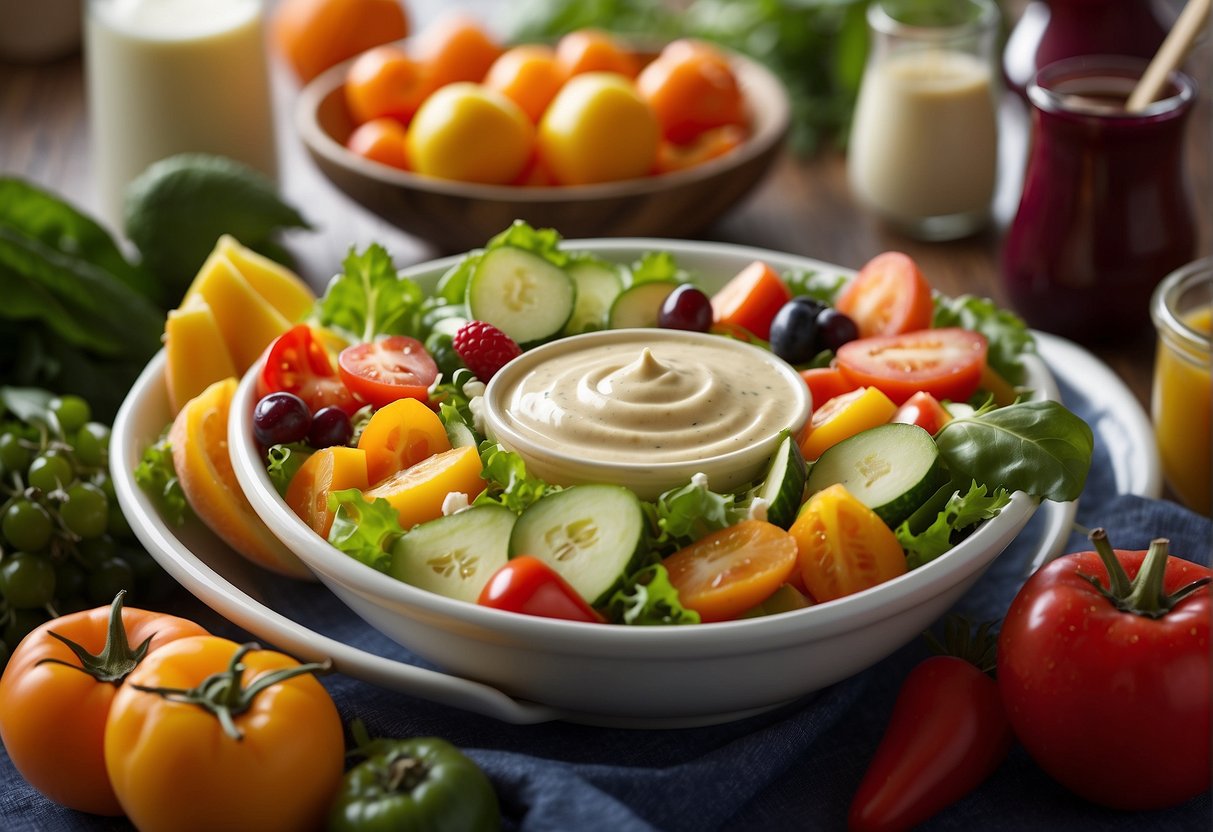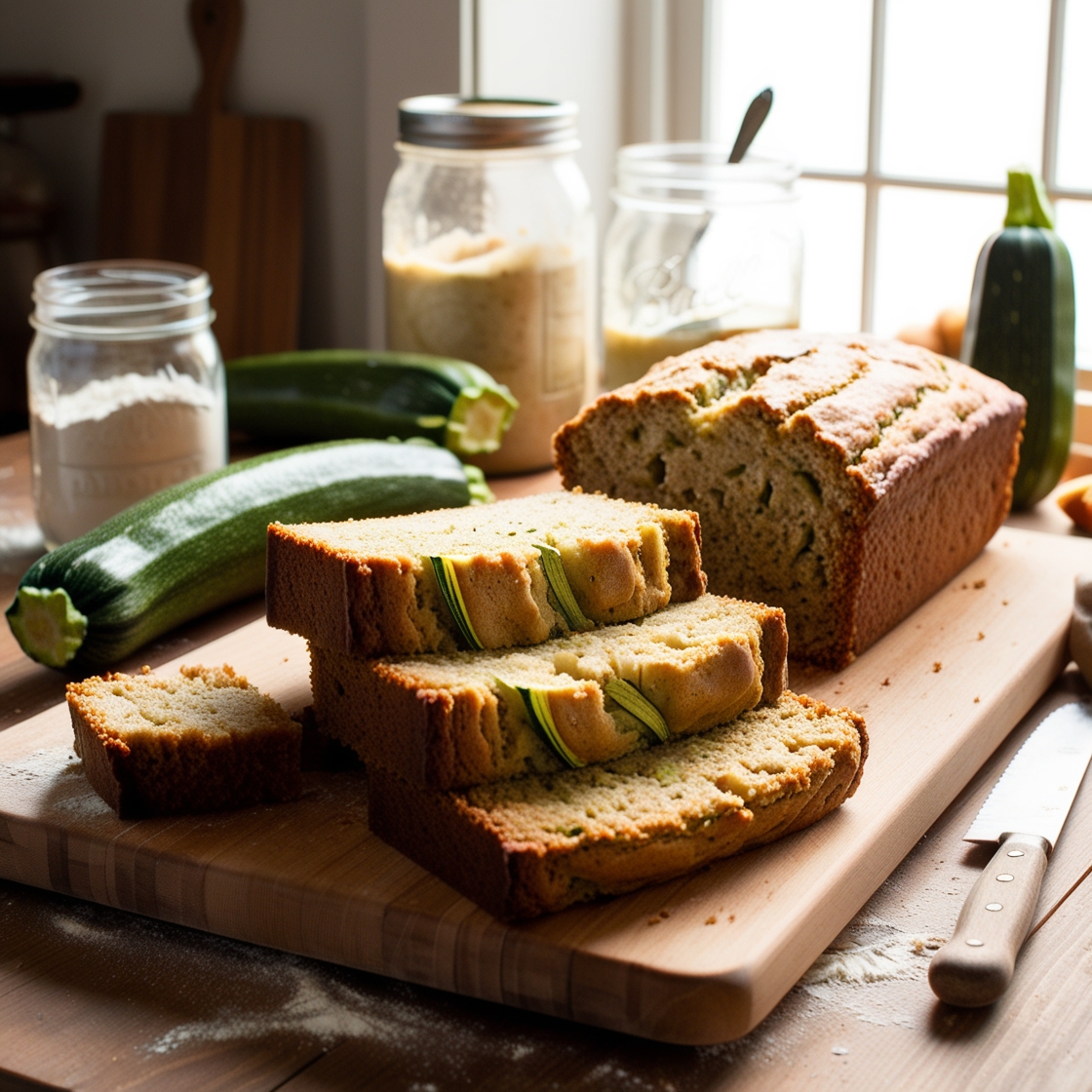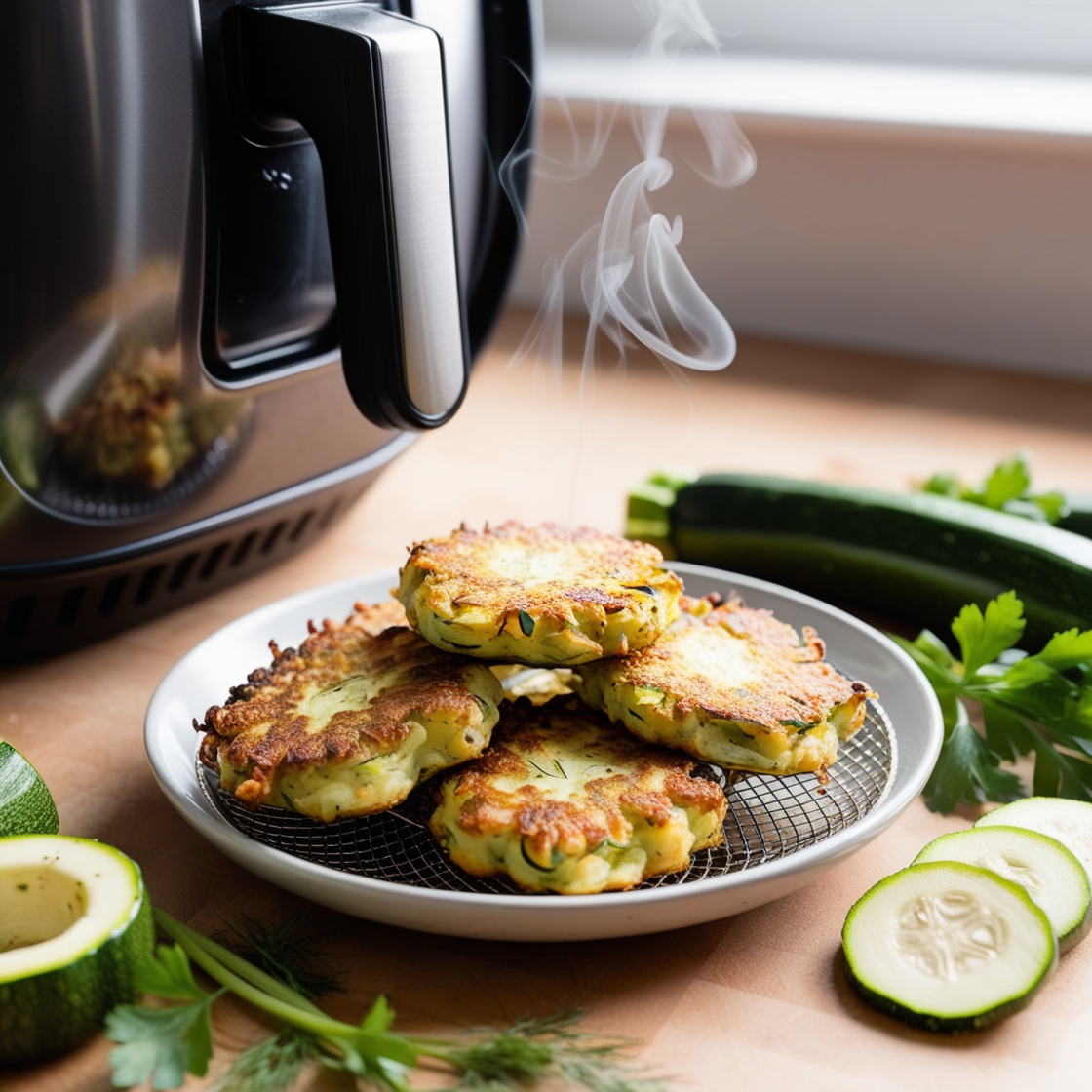Before I became health-conscious, I already loved salads. All kinds of salads were my favorites—from tossed salads and Insalata Caprese to Waldorf and leafy green salads. Name it, and I probably had it in my recipe collection.
When I used to practice yoga, I particularly enjoyed having a refreshing salad meal after each session. However, I realized I had been overlooking one of the most crucial elements all along—salad dressings. While I meticulously selected fresh vegetables, premium nuts, and organic fruits for my salad bowls, I paid little attention to what I was drizzling on top.
This revelation led me to conduct extensive research on healthy, dairy-free salad dressing alternatives. I told myself there had to be better, healthier options out there.
When I created my website My Nutrition Foods, I made a commitment to share everything I learned, experienced, and discovered throughout this journey. The transformation in my understanding of salad dressings has been remarkable, and I’m excited to share these insights with you.
The Secret to Perfect Dairy-Free Dressing
Through hands-on experience, I’ve discovered that making the perfect dairy-free dressing isn’t just about swapping ingredients—it’s about understanding what makes a dressing creamy, stable, and flavorful. While traditional dairy-based dressings rely on milk proteins for texture, dairy-free alternatives can be just as smooth and satisfying with the right techniques.
One key factor is temperature control. The ideal range for processing dressings is between 45–65°F (7–18°C). Early on, I made the mistake of preparing dressings at room temperature, only to watch them separate too quickly. Now, I know that keeping ingredients within this range helps achieve a consistent texture while preserving flavors.
Another essential element is pH balance. Maintaining an acidity level between 3.8–4.2 ensures stability, freshness, and food safety. It may sound technical, but it makes a big difference in how long a dressing holds its structure.
Perfecting these elements has transformed my dressings from simple mixtures to restaurant-quality creations. Once you understand these secrets, you’ll never settle for store-bought options again!
The Nutritional Gold Mine
What really excites me about dairy-free dressings is their incredible nutritional profile. Through my journey, I’ve discovered that these alternatives often provide superior nutrition compared to their dairy-based counterparts. I’m talking about essential fatty acids, complete proteins, and an abundance of antioxidants—all from plant-based sources!
Take hemp seeds and flaxseed oil, for example. These ingredients have become staples in my kitchen because they’re packed with omega-3 fatty acids, which are fantastic for heart health. And let’s talk about bioavailability—I’ve learned that combining healthy fats with fat-soluble vitamins enhances nutrient absorption, making every salad a true nutritional powerhouse.
Some of my favorite nutritional superstars include:
- Avocados, which provide heart-healthy monounsaturated fats
- Nutritional yeast, giving that cheesy flavor I sometimes miss while adding B vitamins
- Ginger and turmeric, which I love for their anti-inflammatory properties
- Fresh garlic, supporting both immune function and cardiovascular health

A Note on Store-Bought Options
While I prefer homemade dressings, I know convenience is sometimes necessary. After trying many, Primal Kitchen Avocado Oil Greek Dressing & Marinade stands out. Dairy-free, gluten-free, and Whole30-approved, it’s made with avocado oil, organic apple cider vinegar, and Mediterranean spices. Its creamy, tangy flavor is perfect for salads or as a marinade.
- Good Fats We Love: With a clean, neutral flavor and a smooth, texture, Primal Kitchen Avocado Oil is a delicious source of good fats from plant-based avocado oil. This 2-pack premium Avocado Oil is rigorously tested for quality and purity, so only the best makes the bottle.
- Your Versatile High-Heat Cooking Companion: Our premium Avocado Oil has a smoke point of 500°F+, which makes it an excellent choice for all of your cooking needs, including sautéing and searing, frying, air-frying, baking & more.
- Our Commitment to Quality: Unlike with some other oils, there are no industry-wide parameters for pure avocado oil. Since 2020, we have been working alongside the governing agency, CODEX, to help establish an international specification for the quality and purity of avocado oil.
- Ingredients with Integrity: Primal Kitchen Avocado Oil is gluten-free, Certified Paleo, Keto Certified, Whole 30 Approved, and Non-GMO Project Verified. If you're cleaning up your kitchen and looking for new pantry staples, adding avocado oil to your lineup is an easy update.
- Centrifuge Extracted, No Hexene: Our avocado oil is centrifuge extracted with care—and without hexane.
Protein-Packed Hemp Ranch Dressing
This was my solution to missing traditional ranch dressing. It’s packed with complete protein and maintains that familiar ranch flavor we all love:
- ½ cup hemp hearts
- ½ cup water
- ¼ cup nutritional yeast
- Fresh dill and chives to taste
My Favorite Dairy-Free Dressing Recipes
Let me share some of my most successful recipe developments. These have become staples in my kitchen, and I’m confident you’ll love them too.
Omega-Rich Green Goddess Dressing
This vibrant dressing has become my go-to for almost everything. Here’s what you’ll need:
- 1 ripe avocado
- 2 cups fresh herbs (I use a mix of parsley, basil, and cilantro)
- ¼ cup hemp seeds
- ½ cup extra virgin olive oil
- Juice of 1 lemon
- 1 clove garlic
- Sea salt and black pepper to taste
I simply blend everything until smooth, gradually adding the oil to create that perfect emulsion. Each two-tablespoon serving provides 85 calories, 8g of healthy fats, 2g of protein, and 2g of fiber.
My Anti-Inflammatory Ginger Turmeric Dressing
This recipe came about during my exploration of therapeutic foods. It’s become a favorite among my readers:
- 1 inch fresh ginger root
- 1 inch fresh turmeric root
- ¼ cup raw apple cider vinegar
- Juice of 1 lemon
- Black pepper (to enhance turmeric absorption)
The key is to finely mince or grate the fresh roots before blending everything together. Sometimes I strain it for a smoother texture, but I often leave it as is for extra fiber.
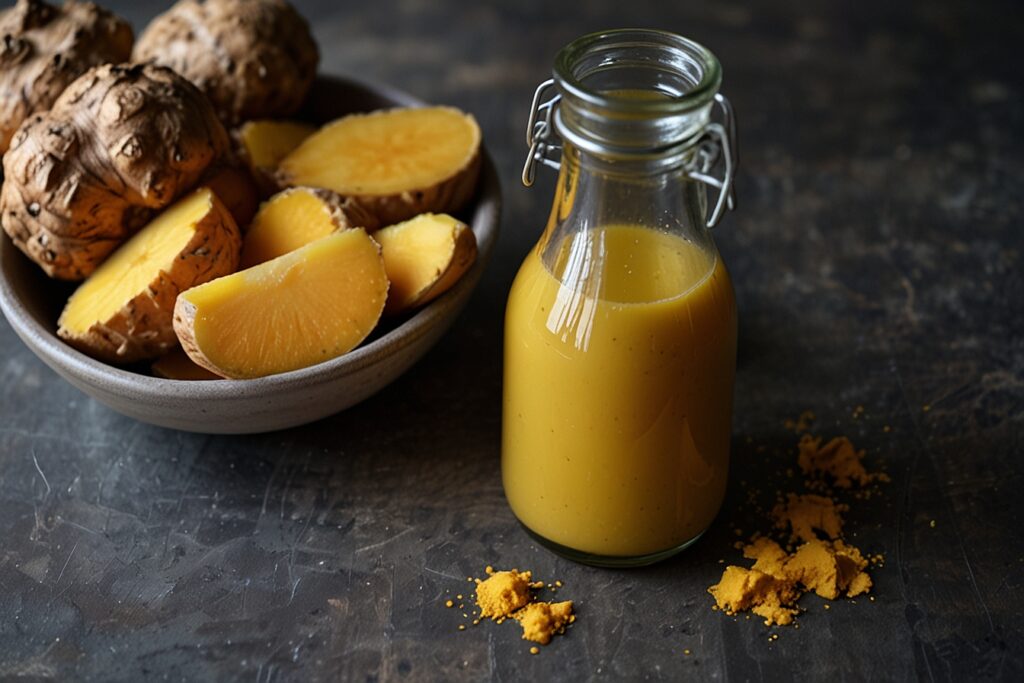
Creamy Avocado Cilantro Dressing
This zesty dressing has become my go-to for taco salads and Mexican-inspired dishes. The creaminess of the avocado creates a perfect base that’s both nutritious and satisfying:
Ingredients:
- 1 ripe avocado
- 1 cup fresh cilantro
- Juice of 2 limes
- ½ cup water (adjust for desired consistency)
- Salt to taste
Instructions:
- I start by roughly chopping the cilantro to help it blend more easily.
- In my high-speed blender, I combine the avocado, chopped cilantro, and lime juice.
- I gradually add water while blending until I achieve the perfect consistency.
- Finally, I taste and adjust the seasoning with salt.
This dressing is best used within 2-3 days due to the fresh avocado, but trust me, it rarely lasts that long in my house!
Smoky Chipotle Vinaigrette
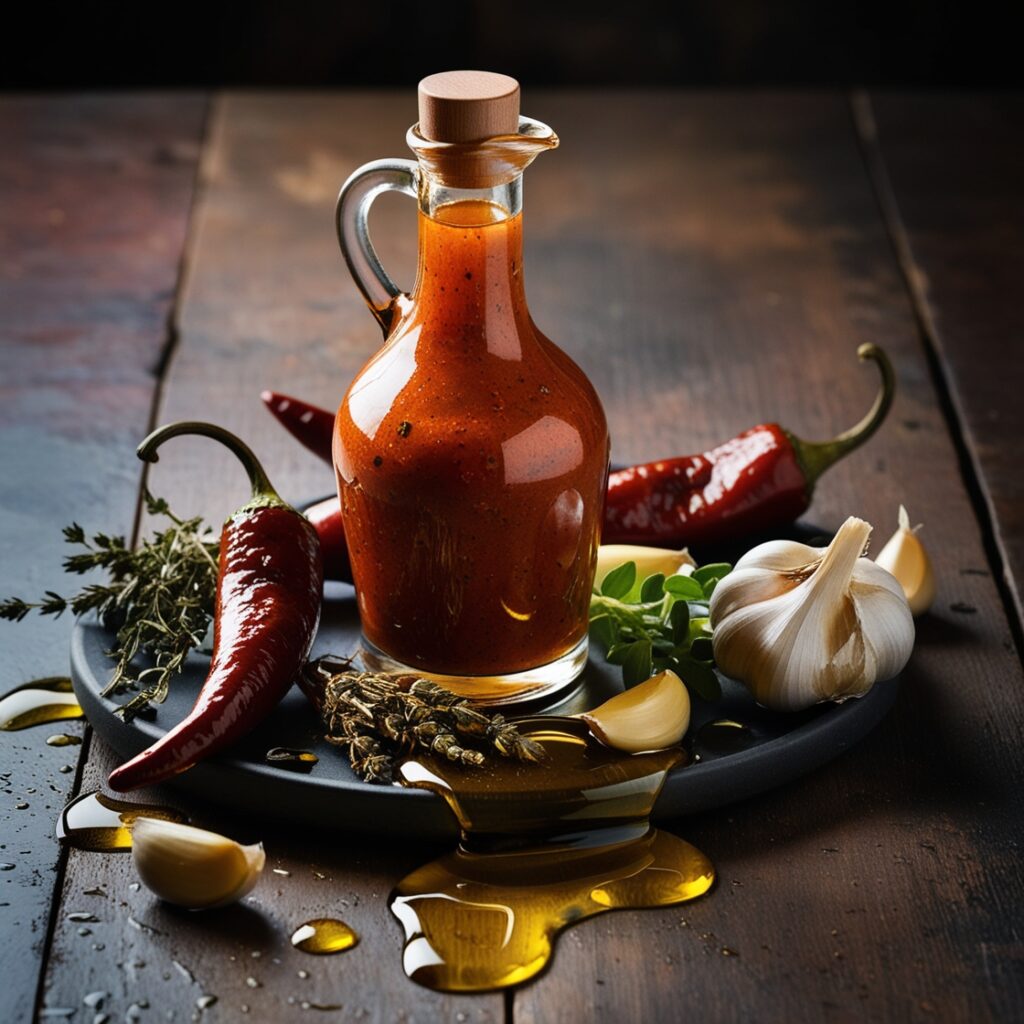
When I’m craving something with a kick, this is my absolute favorite. The smoky chipotle adds depth while the vinegar provides the perfect tang:
Ingredients:
- ¼ cup olive oil
- 2 tablespoons apple cider vinegar
- 1 chipotle pepper in adobo sauce (adjust to taste)
- 1 small clove of garlic
- Pinch of oregano
- Salt and pepper to taste
Instructions:
- I blend all ingredients until perfectly emulsified.
- I always taste and adjust the heat level – sometimes adding more chipotle if I want extra kick.
- This dressing can be used immediately or refrigerated for up to two weeks.
Simple Tricks to Perfect Your Dairy-Free Dressings
Through research and experimentation, I’ve discovered key techniques for making delicious dairy-free dressings. These simple methods can take homemade dressings to the next level, and I’m excited to share them with you.
Advanced Techniques I’ve Mastered
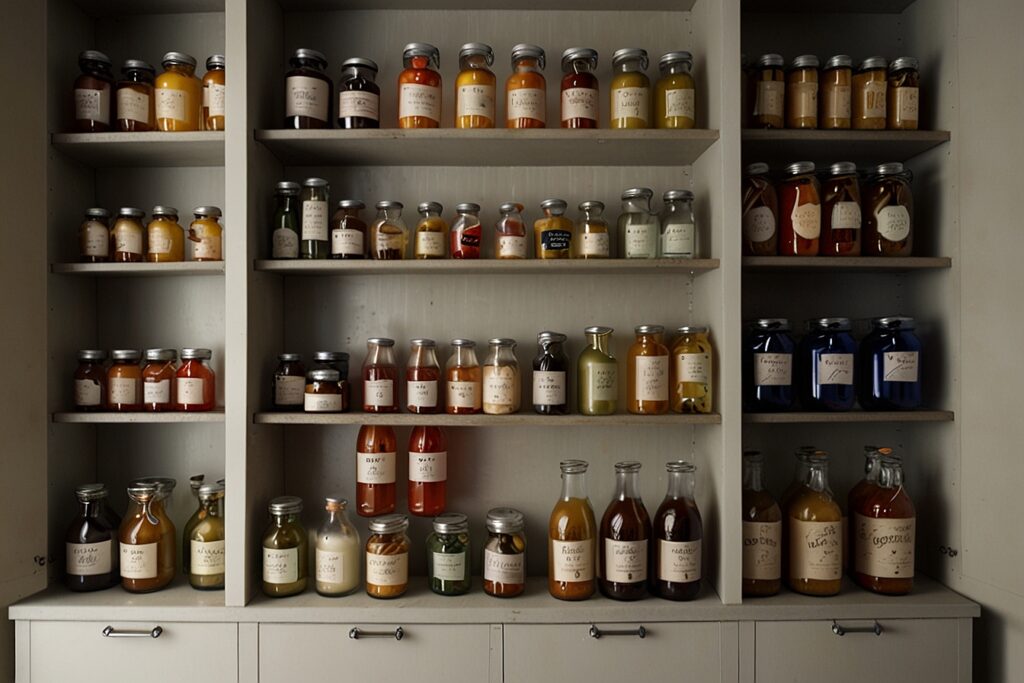
Through trial and error, I’ve learned that equipment matters significantly. I invested in a high-speed blender (minimum 1,500 watts), and it made a world of difference in achieving that perfect creamy texture. I also keep a close eye on temperature management, following a specific mixing protocol that I’ve developed:
- Pre-mixing (30-60 seconds)
- High-speed emulsion (2-3 minutes)
- Rest periods (1-2 minutes)
- Final homogenization (30 seconds)
Storage has been another learning curve. I’ve found that glass jars with tight seals work best, and dark-colored bottles help protect light-sensitive ingredients. Different bases have different shelf lives:
- Fresh ingredient dressings: 3-4 days
- Nut-based dressings: 5-7 days refrigerated
- Oil-based versions: 2-3 weeks
Proper storage is crucial for maintaining the freshness and quality of your homemade dressings. Anchor Hocking glass storage jars with tight-fitting lids are ideal for keeping your creations fresh while also protecting them from light exposure.
- INCLUDES: This Anchor Hocking glass jar set contains (4) 1 gallon jars with screwable aluminum lids. Keep food fresher, longer. Made of all-clear glass.
- VERSATILE: These glass jars are perfect to store and display all manner of goods including flour, cookies, rice, coffee, spices, candy, and much more.
- SAFE: Anchor Hocking glass is healthier than plastic and metal. It will not warp, stain, retain smells, or leach dangerous chemicals into food or drinks.
- USE: These jars are perfect to store and display all manner of dry goods including flour, cookies, rice, coffee, spices, candy, and much more.
- AMERICAN MADE GLASS SINCE 1905
A high-speed blender like the Vitamix 5200 is essential for achieving the perfect creamy texture in your dairy-free dressings. With its powerful motor and durable design, it’s a worthwhile investment for any serious home chef.
- Variable Speed Control: Easily adjust speed to achieve a variety of textures. The dial can be rotated at any point during the blend, so you’re in complete control
- Large Batches: The size and shape of the self-cleaning 64-ounce container is ideal for blending medium to large batches. Design Feature : Radial cooling fan and thermal protection system
- Hot Soup: The blades in the Vitamix container reach speeds fast enough to create friction heat, bringing cold ingredients to steaming hot in about six minutes
- Hardened Stainless-Steel Blades: Our aircraft-grade stainless steel blades are designed to handle the toughest ingredients, so from the first blend to the last, you get the same quality results
- Self-Cleaning: With a drop of dish soap and warm water, your Vitamix machine can clean itself in 30 to 60 seconds
Base Ingredients and Their Substitutes
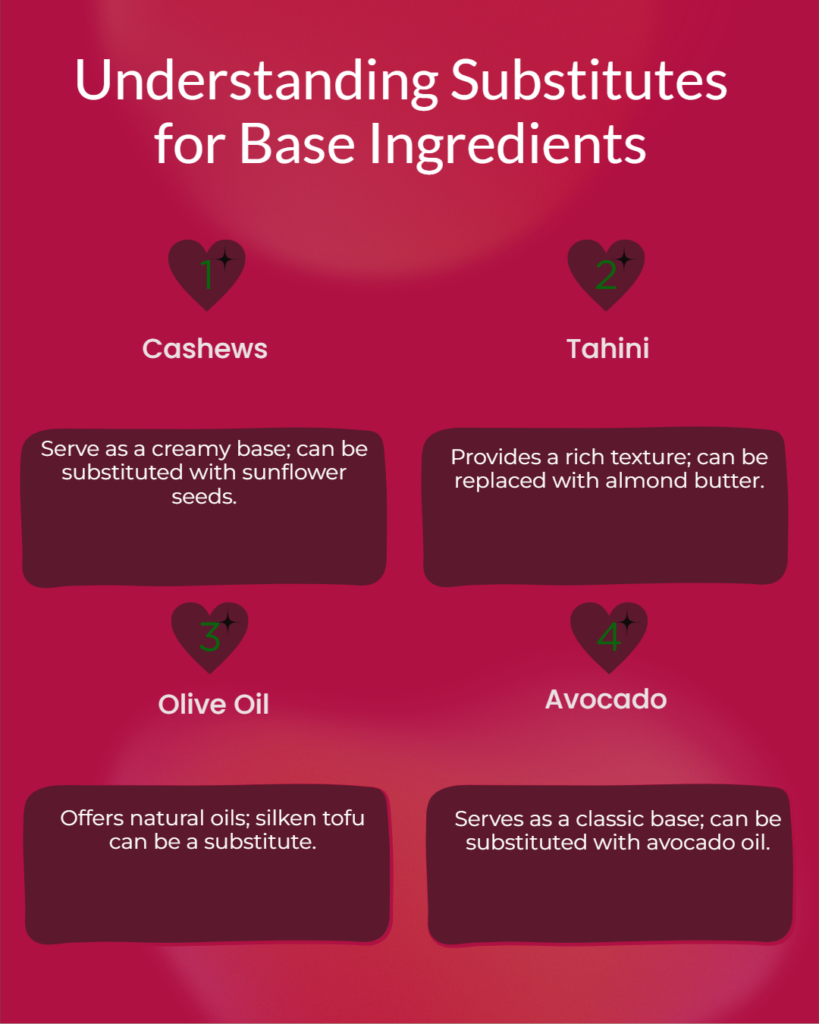
One of the most valuable lessons I’ve learned is the importance of understanding base ingredients and their substitutes. This knowledge has been essential for adapting recipes to different dietary needs and preferences. Below, you’ll find a helpful visual guide showcasing the most common base ingredients and their alternatives.
Let’s take a closer look at these key ingredients:
- Cashews – A go-to for creamy dressings. If you need an alternative, sunflower seeds provide a similar texture and are more allergy-friendly.
- Tahini – This sesame paste adds richness, especially in Middle Eastern-inspired dressings. If you’re out of tahini or prefer a different taste, almond butter is a great substitute.
- Olive oil – A classic ingredient with a distinct flavor. For a lower-fat option, silken tofu works well, particularly in creamy dressings.
- Avocado – Naturally creamy and full of healthy fats. If you’re looking for a swap, avocado oil maintains the smooth texture and offers a longer shelf life.
For those who appreciate the nuances of flavor, using a high-quality extra virgin olive oil like California Olive Ranch can make a significant difference in your dressings. Its rich, smooth taste enhances the overall flavor profile of your creations.
- EXPERIENCE THE TASTE OF CALIFORNIA QUALITY: Our award- winning Cold Pressed 100% California Extra Virgin Olive Oil is crafted from our farms and partner growers exclusively in California. California is known to have the highest quality EVOO certification standard in the world.
- GREAT FOR EVERYDAY COOKING: The well-rounded oil with floral, buttery and fruity notes makes this EVOO perfect for everyday; roasting, grilling, sautéing, frying, marinades and even baking!
- QUALITY THAT LASTS: This eco-friendly two-liter box is equivalent to approximately four 500ml glass bottles with an airtight interior bag that keeps the oil fresher longer.
- GET TO KNOW YOUR EVOO: This product features our new Smart Labels - with a scan of the QR code, you'll be able to learn more about the origins of this product, including harvest year, bottle date, selected chemistry data on quality and healthiness of the oil.
- NOTE: HARVEST DATE DIFFERENT THAN EXPIRATION DATE- Our newly harvested 100% CA oil is usually ready for bottling at the first part of the new year, due to the necessary time for settling post-harvest. It is usually available for purchase starting in April. Once the oil is bottled, the expiration date of any 2L bib is 18 months after bottling and is printed on every box. Please note that all our oils are stored in temperature-controlled, stainless-steel tanks to ensure optimal quality prior to bottling.
The Environmental Impact
One aspect that really motivates me to continue creating and sharing dairy-free dressing recipes is their environmental impact. The numbers are staggering – producing one gallon of dairy-free dressing saves approximately 1,000 gallons of water compared to dairy-based alternatives. The production requires about 80% less land and generates 50% lower greenhouse gas emissions.
What’s Next in Dairy-Free Innovation
The world of dairy-free dressings is constantly evolving, and I find myself excited about new developments almost every week. Through my connections with other food innovators and constant research, I’ve identified several emerging trends that I believe will reshape how we think about salad dressings.
I’m currently exploring and experimenting with:
- Seaweed extracts for umami flavors and mineral content
- Fermented ingredients for probiotic benefits
- Superfoods like spirulina and moringa for enhanced nutrition
In my test kitchen, I’ve been working with fascinating new ingredients that aren’t yet mainstream. For instance, I’ve experimented with watermelon seed butter as an emulsifier—it’s rich in protein and creates an incredibly smooth texture.
I’ve also been exploring the potential of mushroom extracts, particularly lion’s mane and chaga. These not only add depth to the flavor profile but also offer impressive health benefits.
The market for dairy-free options continues to grow, driven by increasing health consciousness and ethical considerations. Through my website and cooking workshops, I’ve noticed a significant shift in interest. It’s no longer just vegans or those with lactose intolerance—everyone from athletes to busy parents is embracing these healthier alternatives.
What excites me most is the innovation in texture and flavor profiles. New processing technologies are making it possible to create dairy-free dressings that perfectly mimic the mouthfeel of traditional creamy dressings. I’ve been fortunate to test some of these technologies in my own kitchen, and the results have been remarkable.
The Growing Community of Dairy-Free Enthusiasts
One of the most rewarding aspects of my journey has been connecting with others who share my passion for dairy-free cooking. Through my website and social media channels, I’ve built a community of health-conscious individuals who regularly share their own recipes and modifications of my dressings.
The journey of exploring dairy-free options has been incredibly exciting, and I look forward to connecting with others who share this interest. Whether you’re managing dairy allergies or simply embracing a more plant-based lifestyle, there’s so much to learn and discover.
That’s why I created a social media community for those who want to explore dairy-free alternatives together. I’ll also be publishing more videos on dairy-free options soon, so be sure to check out my YouTube channel and stay tuned!
Final Thoughts
My journey into the world of dairy-free salad dressings has been transformative. What started as a simple quest for healthier alternatives has become a passion for creating delicious, nutritious dressings that don’t compromise on flavor or texture.
Through understanding the science of emulsions, exploring various ingredients, and mastering preparation techniques, I’ve discovered that dairy-free options often surpass their traditional counterparts in both taste and nutritional value.
Remember, every step toward better health is a victory worth celebrating. Whether you’re new to dairy-free options or a seasoned enthusiast, I encourage you to experiment with these recipes and make them your own.
Health truly is wealth, and small changes in our daily choices can lead to significant improvements in overall well-being. As we continue this journey together, let’s embrace the joy of creating food that nourishes our bodies, respects our planet, and delights our taste buds.
After all, the path to wellness should be both nutritious and delicious.
Here’s to your health—mentally, emotionally, and physically!
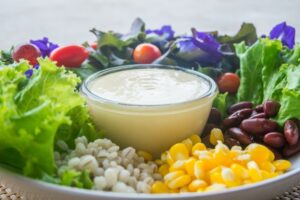
*We may earn a commission for purchases made using our links. Please see our disclosure to learn more.

